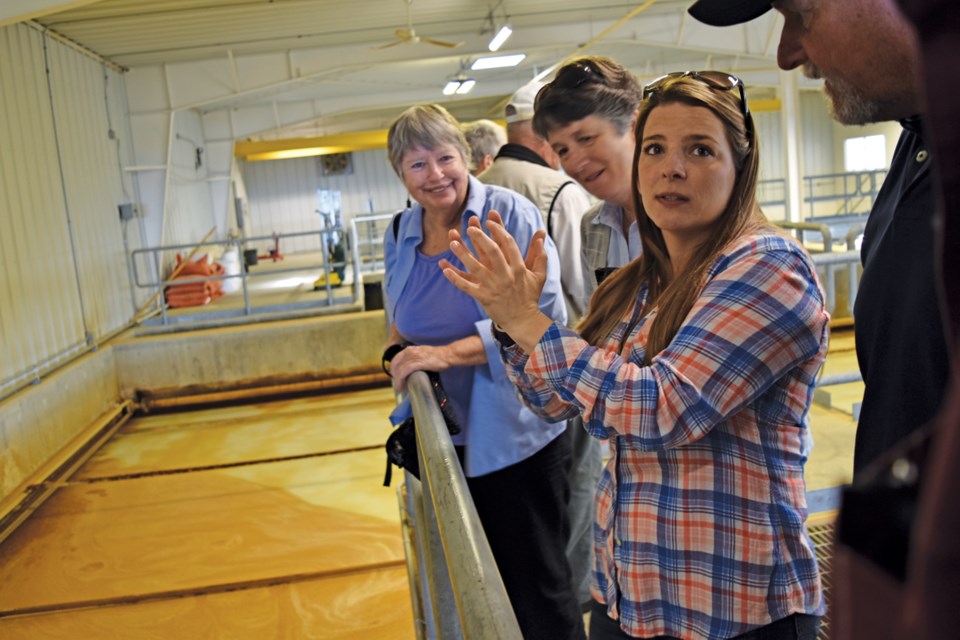To mark Drinking Water Week, the Sunshine Coast Regional District (SCRD) is opening the Chapman Water Treatment Plant to the public, with guided tours May 11 and 12.
“People are always surprised by the scale of the facility that’s in their backyard,” said Raphael Shay, the SCRD’s water and energy projects coordinator.
The treatment plant is level four, the highest treatment level in Canada, and treats water flowing through the Chapman system, which supplies 85 per cent of SCRD users. Another level four water treatment plant is located on the South Pender system.
The plant was built in 2004 to reduce the risk of surface contamination and reduce cloudiness. “One of the key things of a level four treatment plant is that it removes the turbidity in the water,” Shay said.
If the Chapman Lake Expansion Project goes forward, changes are expected at the plant so that it can treat more water, said Codi Abbott, utilities superintendent at the SCRD during a preview tour. “As part of the expansion project we’re going to look at residuals handling” – separating solids from the water, she said. “We want a more efficient process for the residuals handling, we just don’t know what it’s going to be.”
This year more than $690,000 was budgeted for a major upgrade to the chlorination system, which is reaching the end of its life and because of the safety hazards associated with the chemical.
“Right now we use chlorine gas, which has more safety concerns than sodium hypochlorite, so the chlorine upgrade would include doing some upgrades to the facility, decommissioning the chlorine gas and commissioning a new on-site generation,” Abbott said.
“It eliminates all safety concerns. There’s no use of chemicals for the operators, we just use salt and make a brine and create sodium hypochlorite at a lower concentration than even household bleach.”
Currently, the water is dosed with 1.2 milligrams of chlorine per litre.
Drought changes how water is treated. There is less turbidity with less rain; however, “the level of bacteria would be the same or more with low flow as the water stays stagnant and can breed bacteria,” Abbott said.
The treatment plant is located on Chapman Creek up Reservoir Road in Selma Park. Tours will be held Friday, May 11 from 1 to 2:30 p.m. and Saturday, May 12 from 10:30 a.m. to noon. Reservations can be made by contacting Raphael Shay at [email protected] or at 604-885-6800, ext. 6481.



